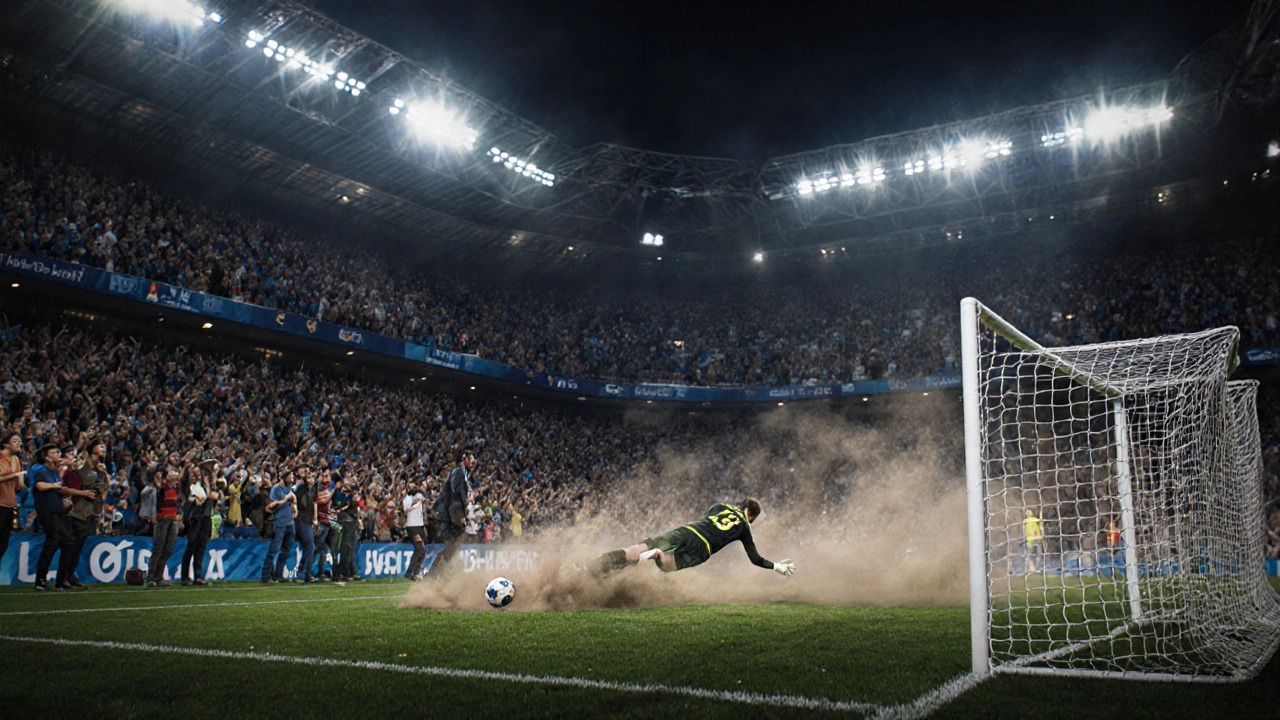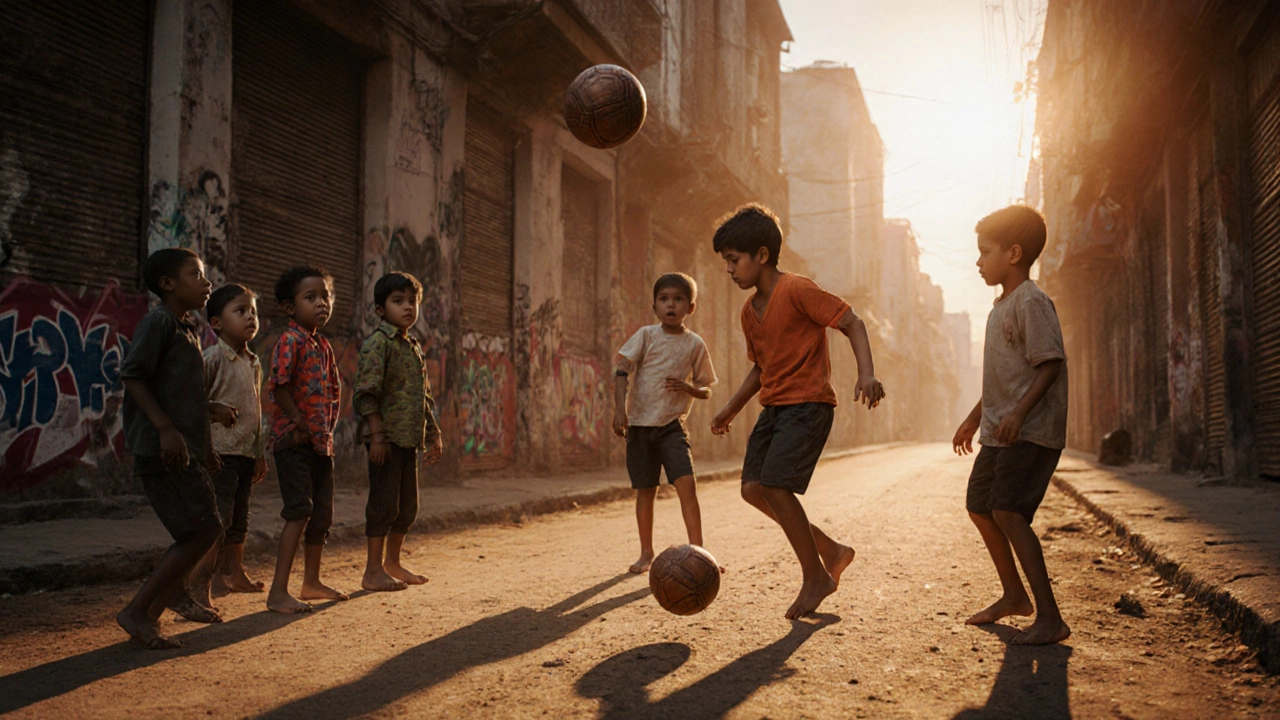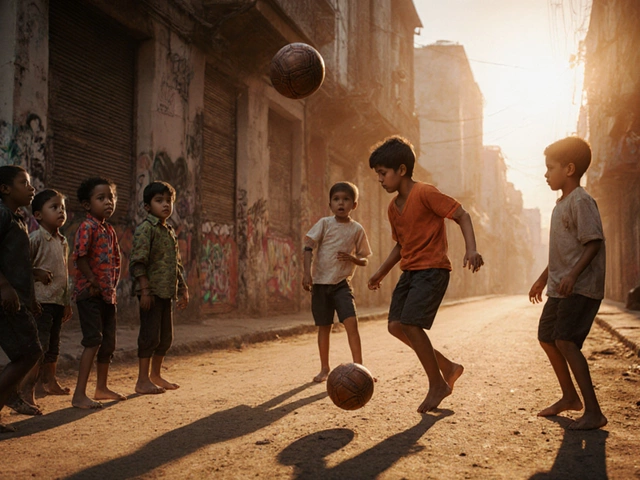Offside Rule Simulator
How the Offside Rule Works
The offside rule states that a player is offside if they are closer to the opponent's goal than both the ball and the second-last opponent (usually the last defender) when the ball is passed to them. They must be actively involved in play for it to count as offside.
Instructions:
1. Drag players to position them on the field
2. Click "Simulate Pass" to see if the offside rule applies
3. Check the result below for offside status
Result: Onside
Football isn’t just a game. It’s a global language spoken in every country, from the dusty streets of Rio to the packed stadiums of London, and even the backyard fields of Adelaide. If you’ve ever watched a match and wondered what’s actually going on - why players keep running after the ball, why only one person can use their hands, or why the game seems to stop and start without warning - you’re not alone. This is what football really is, broken down simply, without the noise.
What Football Actually Is
Football - called soccer in the U.S. and a few other places - is a team sport where two sides of eleven players try to score by getting a ball into the opposing team’s goal. The team with the most goals at the end of two 45-minute halves wins. That’s it. No clocks stopping for fouls, no timeouts, no commercial breaks interrupting the flow. The game runs on two things: time and movement.
The ball is round, made of leather or synthetic material, and weighs between 410 and 450 grams. It’s kicked, headed, or passed with any part of the body - except the hands and arms, unless you’re the goalkeeper inside their own penalty area. That’s the one big rule that shapes everything else. It forces players to be creative with their feet, to think fast, and to move as a unit.
How the Game Is Played
Each team has a goalkeeper, defenders, midfielders, and forwards. Their positions aren’t fixed like in American football. Players switch roles constantly. A defender might push forward to help attack. A midfielder might drop back to help defend. That fluidity is what makes football so exciting to watch.
The field is rectangular, usually between 90 and 120 meters long and 45 to 90 meters wide. Goals are 7.32 meters wide and 2.44 meters high. The ball must completely cross the goal line between the posts and under the crossbar for a goal to count. Simple. No video reviews needed for basic decisions - though referees now use VAR in top leagues to check clear errors.
Players can’t touch the ball with their hands or arms - not even to stop it from hitting their face. If they do, it’s a foul. The referee blows the whistle, and the other team gets a free kick. If the handball happens inside the penalty area, it’s a penalty kick. One shot, one chance, from 11 meters out. That’s when the whole stadium holds its breath.
Why Football Matches Last So Long
Football matches are 90 minutes long, split into two 45-minute halves. But you’ll often see the game go on for 100 minutes or more. Why? Because the referee adds extra time - called stoppage time - to make up for delays. Injuries, substitutions, celebrations, and even time-wasting tactics all add up. The referee decides how much to add, and it’s shown on a board at the end of each half.
There’s no clock stoppage. The game keeps running even if a player goes down. That’s why you’ll see teams holding the ball for 20 seconds after a foul - it’s not cheating, it’s strategy. And it’s part of what makes football so tense. Every second counts.

Offside: The Most Confusing Rule
If you’ve ever shouted at your TV during a goal that got disallowed, you’ve probably been confused by offside. Here’s how it works: a player is offside if they’re closer to the opponent’s goal than both the ball and the second-last opponent (usually the last defender) at the moment the ball is passed to them. And they have to be involved in the play - meaning they touch the ball or interfere with an opponent.
It’s not about being in front of the defense. It’s about being in front when the pass is made. And you can’t be offside in your own half. You can’t be offside from a corner, goal kick, or throw-in. That’s why you’ll see attackers sprinting past defenders right before the ball is played - they’re timing it perfectly. It’s a high-risk, high-reward move. And it’s why VAR exists: to catch those tiny millimeters that change the outcome.
How Goals Are Scored and Won
There’s no point system like in basketball or rugby. One goal = one point. That’s why a 1-0 win feels like a victory, and a 5-0 win feels like domination. The team with the most goals at the final whistle wins. If it’s tied, the match ends in a draw - unless it’s a knockout tournament, where extra time and penalties decide the winner.
Penalty shootouts happen after two 15-minute extra time halves if the score is still tied. Each team takes five shots from the penalty spot. If it’s still tied after five, it goes to sudden death - one shot at a time, until someone misses and the other scores. It’s brutal. It’s dramatic. And it’s football.

What Makes Football Different
Unlike most sports, football doesn’t need expensive gear. A ball, some boots, and a patch of ground are enough. That’s why it’s played everywhere - from slums in Nairobi to suburbs in Melbourne. You don’t need a gym membership or a coach. You just need friends and a ball.
It’s also the only major sport where the best players in the world come from countries with limited resources. Lionel Messi grew up in a small town in Argentina. Mohamed Salah started on dusty pitches in Egypt. Cristiano Ronaldo was raised by a single mother in Portugal’s poorest region. Football doesn’t care where you’re from. It only cares what you can do with the ball.
Why Football Matches Matter
A single match can change a city’s mood. When Argentina won the 2022 World Cup, millions poured into the streets of Buenos Aires. When England lost in the 2020 Euro final, fans cried in pubs across London. In Australia, when the Socceroos qualified for the World Cup, people turned up to watch games on big screens in parks - even at 3 a.m.
Football matches aren’t just about winning. They’re about identity. A club like Manchester United isn’t just a team - it’s a family. A local team in Adelaide might be the only thing keeping a neighborhood together. The game connects people across language, religion, and politics. That’s why it’s more than a sport. It’s culture.
How to Watch a Football Match for the First Time
If you’re new, don’t try to understand everything. Just watch how the players move. Notice how they pass the ball with one touch. Watch how defenders step in front of attackers without tackling. See how a midfielder controls the rhythm of the game. You don’t need to know every rule to feel the tension.
Start with a simple match - maybe a local league game or a friendly between two teams you know. Watch for the goals. Watch for the saves. Watch how the crowd reacts. The emotion is real. The noise is real. The passion is real. That’s what football is.
Is football the same as soccer?
Yes, they’re the same game. The term "soccer" comes from "association football," which was used in Britain in the late 1800s to distinguish it from rugby football. In most of the world, it’s just called football. In the U.S., Canada, Australia, and a few other places, "soccer" is used to avoid confusion with American football or Australian rules football.
How many players are on a football team?
Each team has eleven players on the field at once, including one goalkeeper. Teams can make up to five substitutions during a match in most professional competitions, and they can name up to nine substitutes on the bench. If a team has fewer than seven players due to injuries or red cards, the match is forfeited.
What’s the difference between a yellow card and a red card?
A yellow card is a warning for unsporting behavior - like a reckless tackle, time-wasting, or arguing with the referee. A player who gets two yellow cards in the same match is shown a red card and sent off. A direct red card is given for serious fouls, violent conduct, or spitting. A team that loses a player to a red card has to play with one fewer player for the rest of the match.
Why do footballers wear shin guards?
Shin guards protect the lower leg from kicks and collisions. They’re mandatory in all official matches and must be worn under the socks. Football involves a lot of contact - even in friendly games - and without shin guards, players risk serious injury. They’re lightweight, made of foam or plastic, and designed to absorb impact without restricting movement.
Can women play football too?
Absolutely. Women’s football has grown massively over the last 30 years. The FIFA Women’s World Cup is now one of the most-watched sporting events globally. Teams like the U.S. Women’s National Team and Australia’s Matildas compete at the highest level. The rules, field size, and match duration are identical to men’s football. The only differences are in physicality and pace - not in how the game is played.
What’s the most important skill in football?
Ball control. That’s the foundation of everything. Whether you’re dribbling past a defender, receiving a pass under pressure, or shooting from 25 meters out - if you can’t control the ball, you can’t play. The best players in the world aren’t the fastest or strongest. They’re the ones who can make the ball do exactly what they want, every time. That’s why kids in Brazil spend hours juggling the ball against walls. It’s not a trick. It’s training.






